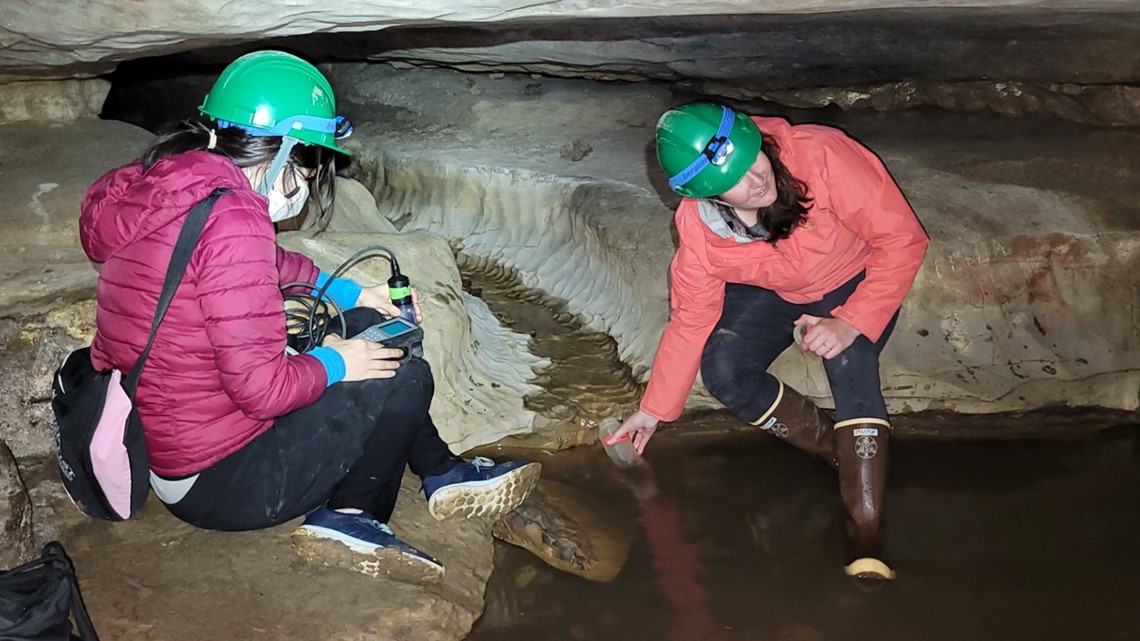OAKVILLE, Mo. — Toxic particles that can pollute the human body, poison animals and disrupt entire ecosystems can be found throughout the world thanks to the production of plastic, numerous research studies have found.
Thanks to new research from St. Louis University (SLU), we now now these microplastics have spread to areas long untouched by humans.
Cliff Cave near Oakville has been closed off to public access since 1993 after a flash flood drowned six people. SLU researches and students from a university hydrology class studying microplastics chose the cave due to its unique isolation which allowed them to eliminate human presence as a possible cause of contamination.
The researchers discovered that even in an area where humans haven't stepped foot in 30 years, microplastics were still found throughout the cave.
"Microplastics move with water, and, when flooding occurs, the excess water brings more microplastics with it to the cave," the SLU Water Institute said in a press release. "Flooding also contributed to a higher diversity of microplastics in the cave water. When those flood waters receded, microplastics were likely deposited near the cave’s mouth in higher abundances than in locations deeper in the cave."


Another surprise find: Microplastics were almost 100 times more concentrated in cave's sediment than its water.
"99 percent of the microplastic debris we found in the cave was stored in the sediment; only a very small fraction of the plastic was in the water," said Liz Hasenmueller, lead researcher of the project and associate director of the institute. "We think what is probably happening is that, after the cave floods, particles in the water are deposited into the sediment. As the waters recede, that material remains in the cave sediment, potentially for decades or longer. And, when the water level goes down, microplastic concentrations in the water are much lower.”
The nearby residents in Oakville could be contributing to the microplastics found in Cliff Cave, especially since previous SLU research found that population density is the biggest factor in determining where microplastics are found in nature.
“Understanding what level of threat microplastics pose to the unique and rare animals that only inhabit cave systems is really important,” Hasenmueller said. “Only a handful of studies have assessed microplastics in these types of underground ecosystems."
Top St. Louis headlines
Get the latest news and details throughout the St. Louis area from 5 On Your Side broadcasts here.

